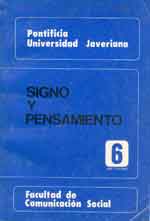Abstract
Se dice que las ideas fijas que los grandes artistas van madurando durante años, cuando logran concretarse suelen concretarse en sus obras maestras, este parece ser el caso de Sergio Leone y “Erase una vez en América”. Diecisiete años llevaba Leone soñando con la realización de este argumento: fue justamente después de haber terminado “Lo Bueno, lo Malo y lo Feo”, cuando se le ocurrió la idea. El no quería hacer mas Westerns y propuso un argumento al estilo de las viejas películas de serie negra. Loa productores norteamericanos pensaron que la venta de “westerns Spaghetti”, del cual Leone fue su más importante exponente, todavía daba para mucho, especialmente después del éxito de “lo bueno, lo Malo y lo feo” así que le propusieron al director italiano un pequeño chantaje: “Te financiamos tu película de gansters, pero antes tendrás que realizar dos westerns más”. Leone accedió, pero nunca imagino que su proyecto tardaría tanto en ser realidad. Finalmente fue terminado en 1984 y estrenado con éxito rotundo en el Festival de Cannes de este año con el nombre de “Era una vez en América”. La película no resulto triunfadora, pero alcanzó el aplauso unánime de los especialistas. La ganadora fue la película de otro Europeo, Win Wenders, que como la de Leone rinde homenaje a la sociedad norteamericana y a cierto cine de ese país, por eso la prensa francesa bromeando sobre la conciencia obvia de estos dos filmes hablaba de “Erance dos veces en America”.This journal is registered under a Creative Commons Attribution 4.0 International Public License. Thus, this work may be reproduced, distributed, and publicly shared in digital format, as long as the names of the authors and Pontificia Universidad Javeriana are acknowledged. Others are allowed to quote, adapt, transform, auto-archive, republish, and create based on this material, for any purpose (even commercial ones), provided the authorship is duly acknowledged, a link to the original work is provided, and it is specified if changes have been made. Pontificia Universidad Javeriana does not hold the rights of published works and the authors are solely responsible for the contents of their works; they keep the moral, intellectual, privacy, and publicity rights.
Approving the intervention of the work (review, copy-editing, translation, layout) and the following outreach, are granted through an use license and not through an assignment of rights. This means the journal and Pontificia Universidad Javeriana cannot be held responsible for any ethical malpractice by the authors. As a consequence of the protection granted by the use license, the journal is not required to publish recantations or modify information already published, unless the errata stems from the editorial management process. Publishing contents in this journal does not generate royalties for contributors.


